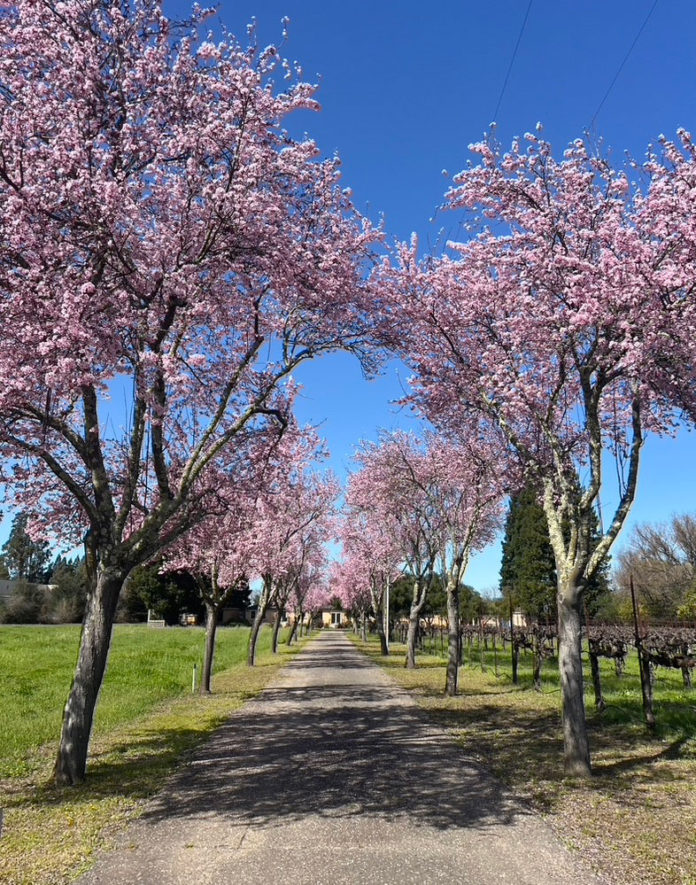Phew, Sonoma County finally made it through the winter rains. As if on cue, sunshine and flowers broke out for spring’s March 15th debut. Cherry blossoms, fields of daffodils (Narcissus) and yards with calla lilies (Zantedeschia aethiopica).
Healdsburg’s fields and gardens are filled with flowers that a snapshot can’t display.
Here’s a list of flowers seen on a St. Patrick’s Day walk: California poppy (Eschscholzia californica), fuchsia (Fuchsia magellanica), azalea (Rhododendron indicum), rosemary (Salvia Rosmarinus), spurge (Euphorbia characias), fool’s onion (Triteleia hyacinthine), snapdragons (Antirrhinum majus), cape marguerite (Osteospermum ecklonis), summer snowflakes (Leucojum aestivum), African flags (Chasmanthe floribunda), nasturtium (Tropaeolum majus), primrose (Primula acaulis), camelias (Camelia japonica), pennyroyal (Mentha pulegium), Chinese fringe flower (Laropetalum chinense), magnolias (Magnolia grandiflora) and more.
Fun facts: Sonoma County has three major climate zones: coastal marine, coastal cool and coastal warm, with USDA Hardiness Zone indexes of 9a, 9b and 10a. Temperatures generally range from low 40s-50s to high 80s-90s with sunny days and a long growing season; hence, many kinds of plants thrive here. Healdsburg’s Plaza contains palm, oak, redwood and orange trees—let that sink in, no pun intended!
Cherry blossoms, Japan’s prized and unofficial national flower, are known as Sakura. Hanami, in Japanese, means flower viewing. Five-petaled cherry blossoms, called Yaezakura, are preferred over showier forms with 28-petals, known as Kanzan.
Daffodils generally symbolize spring’s arrival, new beginnings and rebirth. It’s the flower of 10th wedding anniversaries, and the fields in Dr. Zhivago where 7,000 bulbs were planted for the Varykino scenes were actually filmed in Spain in 1965.
Calla lilies hail from Africa, hence their botanical name. Zantedeschia aethiopica have a spathe with a pair of bracts enclosing a spadix, which is a type of inflorescence typical of arums. English translation: Calla lilies have modified leaves which curl to funnel pollinating insects to the pistil, the female reproductive part of a lily’s flower. Parts of the pistil include: stigma, style, carpel, stamen, calyx, sepals, whorls, spadix and ovules.
OK, that last bit wasn’t quite English, but it is to a botanist.









